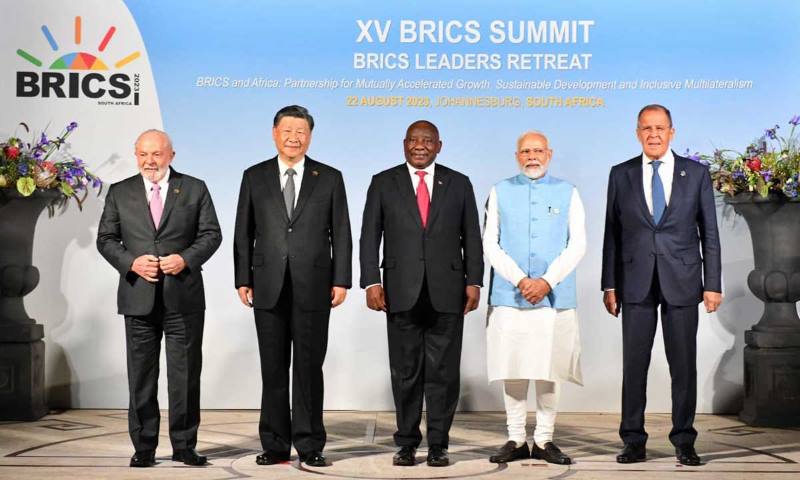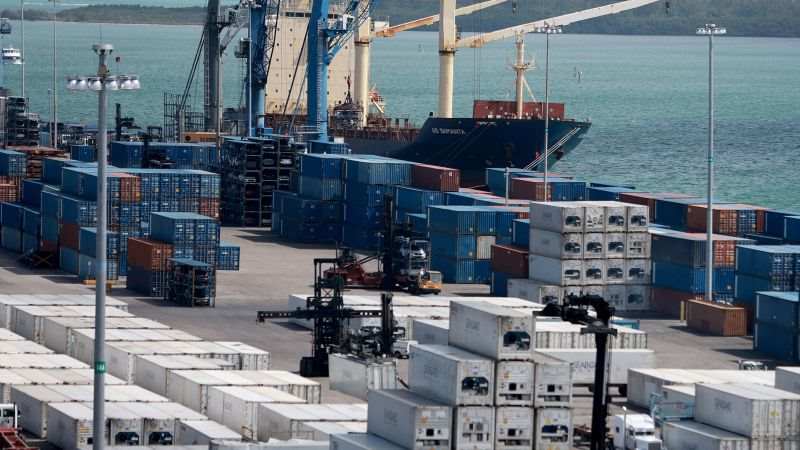Economy
U.S. Economic Contraction Highlights Perils of Trade Gambit
The U.S. economy contracted at an annualized rate of 0.3% in the first quarter, slightly falling short of Bloomberg’s consensus forecast. This data reflects a broader concern about the nation’s economic preparedness for the White House’s global trade strategy, which risks eroding consumer purchasing power and corporate stability. While this contraction raises alarm bells, a full-blown recession is not inevitable, and a recalibration of policies could still stave off further economic distress.
The Contraction Driven by Imports
The GDP contraction mainly resulted from a surge in imports. This likely happened as businesses rushed to avoid Trump’s aggressive tariff policies. Trump announced the “Liberation Day” tariffs just two days after the quarter ended, which increased data volatility. Since GDP measures domestic output, subtracting imports causes quarter-to-quarter fluctuations.
The Temporary Surge in Imports
Trump’s tariff agenda is intended to reduce the trade deficit, but this surge in imports is likely a short-term effect. Other components of the economic report showed resilience. Consumer spending grew at a 1.8% annualized rate, the slowest since Q2 of 2023, but still far from disastrous. Business investment also rebounded, offering a bit of economic stability. However, inflationary pressures remain high, with the core personal consumption expenditures price index rising 3.5% — the highest in a year.

BRICS Division Hinders Global Reforms After Expansion
Soon after welcoming new members, the BRICS alliance faces growing internal disunity. During a two-day…
Is Trump Responsible for the Downturn?
Attributing the downturn solely to Trump oversimplifies the issue. Economic policy effects take time to show. Early-term shifts aren’t always directly linked to a newly inaugurated president. Bush and Obama weren’t blamed for downturns in their early terms. Trump inherited a strained economy, with high mortgage rates and rising loan delinquencies.
Trump’s Interventionist Economic Policies
Trump’s policies have been notably interventionist, from his protectionist trade measures to his public pressure on the Federal Reserve. His approach has caused market volatility, with consumer sentiment declining and the equity market seeing instability. The import surge distorting GDP is a consequence of these policies, highlighting the erratic nature of his economic decisions.
A Misguided Attempt to Deflect Blame
After the GDP report, Trump attempted to deflect blame onto President Biden, claiming that the data reflected conditions inherited from the previous administration. His message on Truth Social read, “This will take a while. Has NOTHING TO DO WITH TARIFFS… BE PATIENT!!!” However, unless there is a change in policy, future contractions will likely be influenced by tariffs, which are destabilizing business confidence.
The Impact of Tariffs on Business Confidence
Business confidence is dwindling, as regional manufacturing indicators show a sharp decline in outlook. Trump’s tariffs — especially the 145% duties on Chinese goods and the baseline 10% levies on global imports — are threatening profit margins and consumer prices. The unpredictable nature of this policy has paralyzed business planning, causing instability in hiring and investments.
The Need for Policy Clarity and Stability
Trump sometimes softens his tariff stance, like reducing pressure on the auto sector. Yet the tariff rate stays near 20%, a century high. These decisions show an inconsistent and reactive strategy. Trump should provide clearer direction, extend tariff reprieves, and lower tensions with China. This approach would reduce uncertainty and give businesses time to adjust.
The Bigger Picture: Strategic Goals and Economic Risks
The administration says tariffs will restore domestic supply chains and boost working-class wages. However, the aggressive approach raises doubts. Current data suggests this may not be the right time for confrontation. A more measured strategy could help avoid deeper economic fallout.


